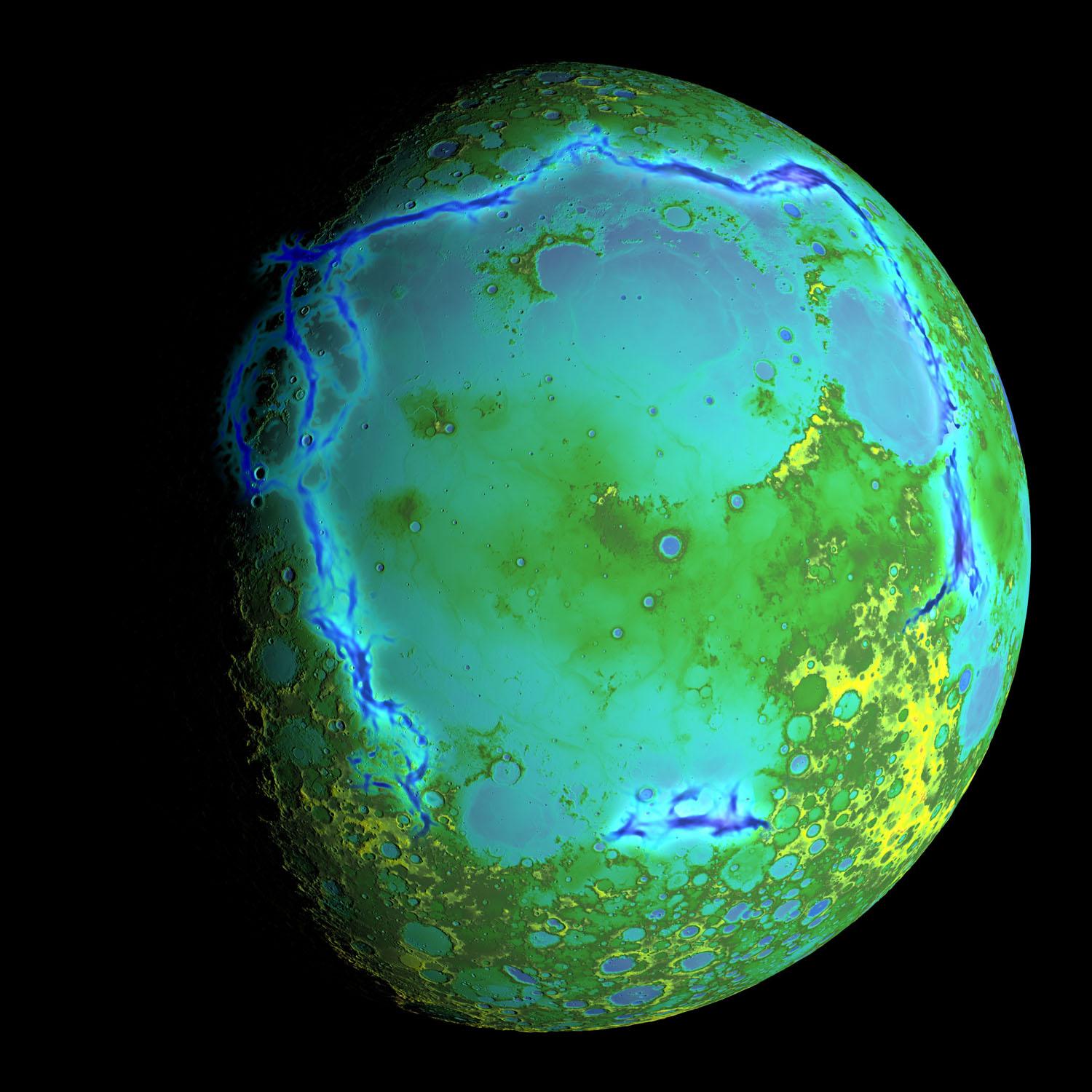
Planetary Processes
We’re studying geological processes that have been occurring on the Moon since its inception.
Many types of planetary processes have occurred throughout the Moon's history, which makes it an accessible natural laboratory for investigation. Geologic evidence of these processes abounds, such as impact cratering, volcanism, space weathering, and tectonism. Present day processes such as active tectonism and seismic activity, mass wasting, and impact cratering make it an ideal target for investigating this surface activity. As a differentiated planetary body, evidence of magma ocean differentiation processes and magmatic activity are also preserved in the geologic record accessible to human and robotic explorers.

Topography of Earth's moon generated from data collected by the Lunar Orbiter Laser Altimeter, aboard NASA's Lunar Reconnaissance Orbiter, with the gravity anomalies bordering the Procellarum region superimposed in blue. The border structures are shown using gravity gradients calculated with data from NASA's Gravity Recovery and Interior Laboratory (GRAIL) mission. These gravity anomalies are interpreted as ancient lava-flooded rift zones buried beneath the volcanic plains (or maria) on the nearside of the Moon.
NASA Goddard





























